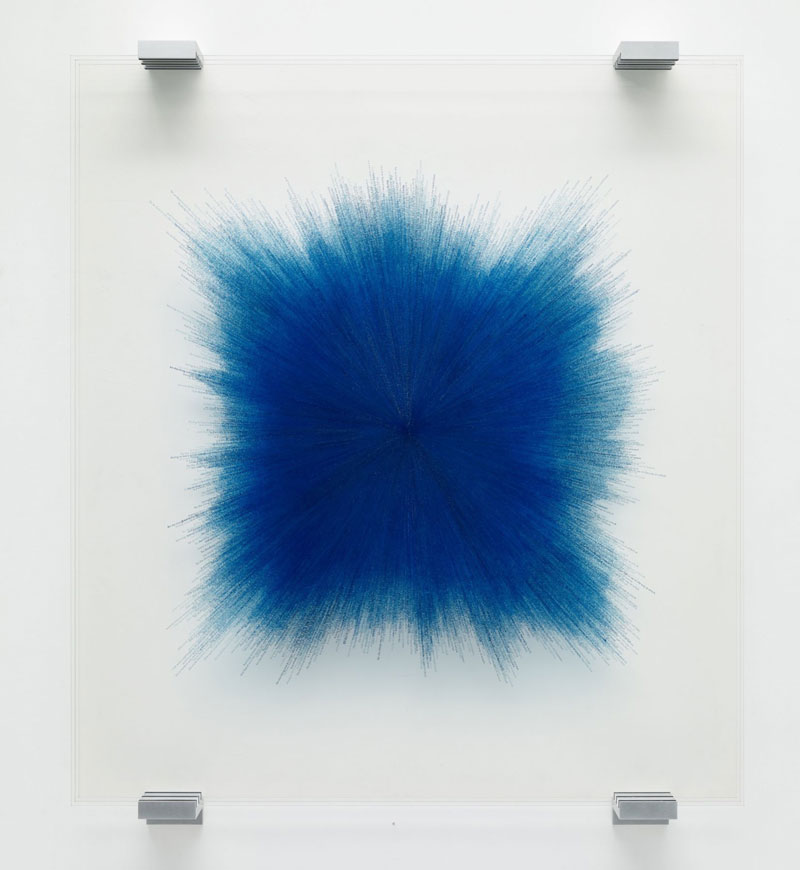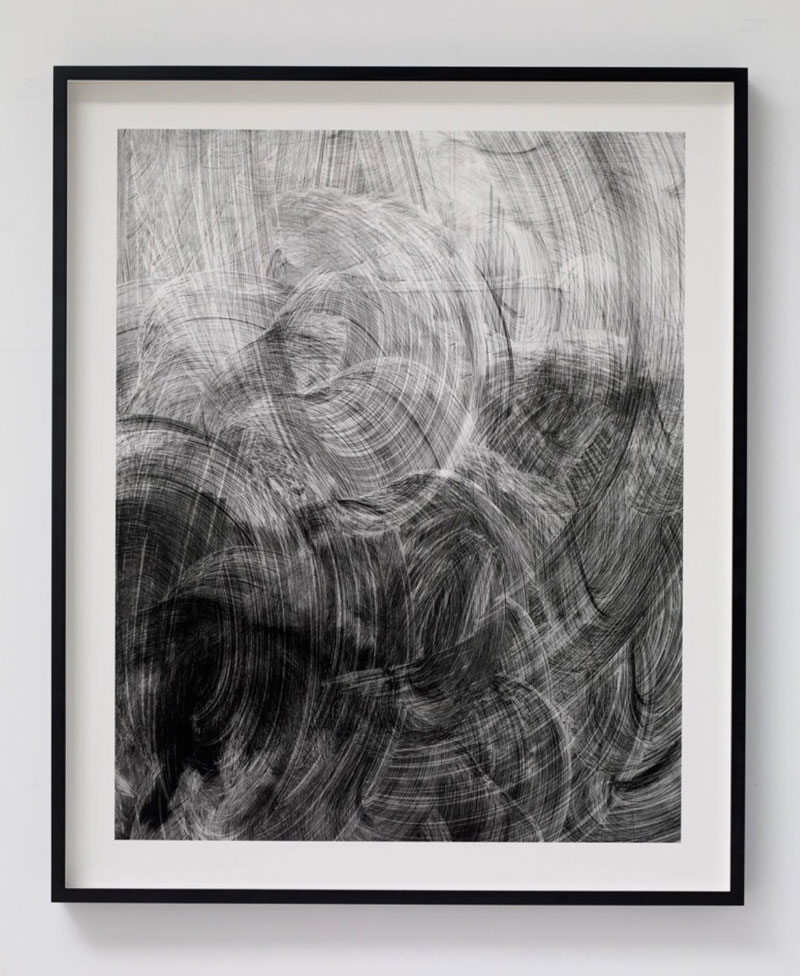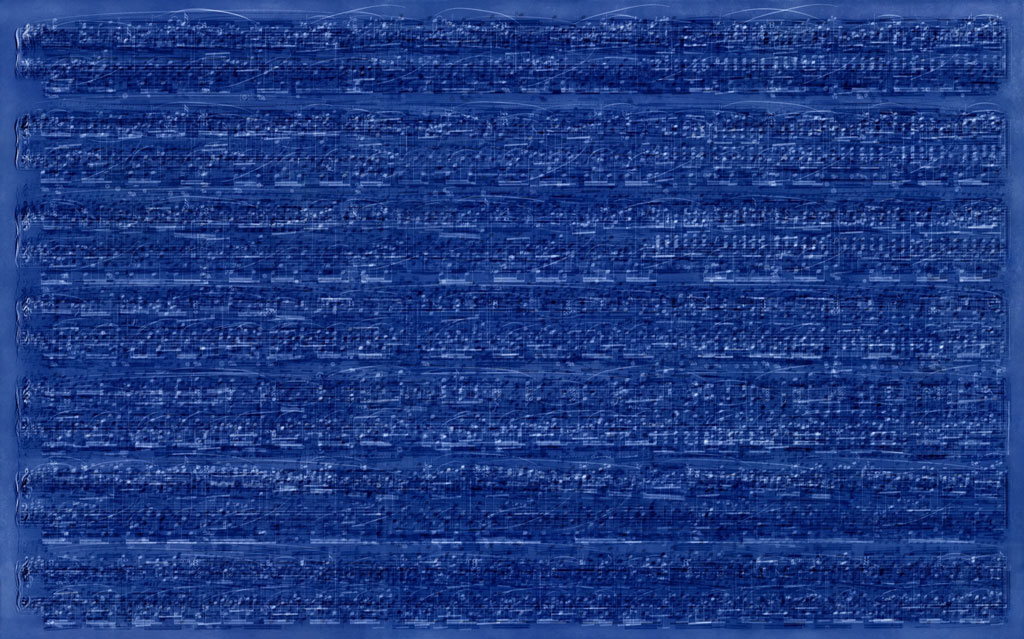ART CITIES:N.York-Idris Khan
Drawing inspiration from the history of art and music as well as key philosophical and theological texts, Idris Khan investigates memory, creativity and the layering of experience. Khan’s works, in media including sculpture, painting and photography, rely on a continuous process of creation and erasure, or the adding of new layers while retaining traces of what has gone before. He is well known for his large-scale works in which techniques of layering are used to arrive at what might be considered the essence of an image, and to create something entirely new through repetition and superimposition.
By Dimitris Lempesis
Photo: Sean Kelly Gallery Archive
Idris Khan first gained attention for work in which he used digital technology to overlay and combine series of visual or textual work: every Bernd and Hilla Becher photograph of a gable-sided house, every page of the Quran, every late Constable painting, every stave of Chopin’s Nocturnes. While photographic in nature, the resulting images possess characteristics more akin to drawing or painting and are presented as a kind of palimpsest, animated by the accumulative intervention of the artist’s hand. Idris Khan’s solo exhibition “Blue Rhythms”, features a new body of paintings, photographs and sculpture that continue the artist’s investigation into the passage and collapse of time and its use within textual, musical and visual bodies. The density and precision of Khan’s compositions, defined by his technique of imposing multiple layers of image, text and music upon one another, allude to the excessive proliferation of information in the technical age whilst simultaneously advocating for a slower, more considered way of looking. Retaining traces of what has gone before or what has been left behind, Khan’s works speak to a layering of experience that harbors palimpsests of the past whilst suggesting entirely new possibilities. Inspired by the writing of poets including Emily Dickinson, T.S. Eliot and Philip Larkin, to create one group of paintings Khan obsessively stamped his own writings repeatedly onto heavily gessoed aluminum panels, ultimately eradicating the meaning of the original text to construct an abstract and universal visual language. Perhaps best known for his monochromatic work in all media, for this body of work Khan has used more color, specifically blue. Each of the works in the exhibition is unified by a palette limited to varying shades of blue. In Rhythms, a monumental work consisting of thirty-six paintings on enlarged panels of sheet music, the artist sharply masked out the musical notations with dense passages of blue oil paint. Revealing only the vivid white lines between the bars of music, which creates a new rhythmic language that alludes to a shifting horizon line running throughout the larger body of work. For Khan, the significance of the color blue lies in how “it can have an immediate effect on emotion. I think it can have a positive or negative effect on the eye.” In these new works, color becomes a major protagonist, mapping an emotional context onto images that compress into a single frame many passages of experience and time”. This is clearly articulated in Khan’s new sculpture entitled “my mother, 59 years”. To produce this work, Khan compiled every printed photograph he could find of his late mother taken in her lifetime (around 360), and cast the group in jesmonite to form an abstract monument that collapses memory and time into a singular column.
Info: Sean Kelly Gallery, 475 Tenth Avenue, New York, Duration: 4/5-22/6/19, Days & Hours: Tue-Fri 11:00-18:00, Sat 10:00-18:00, www.skny.com




